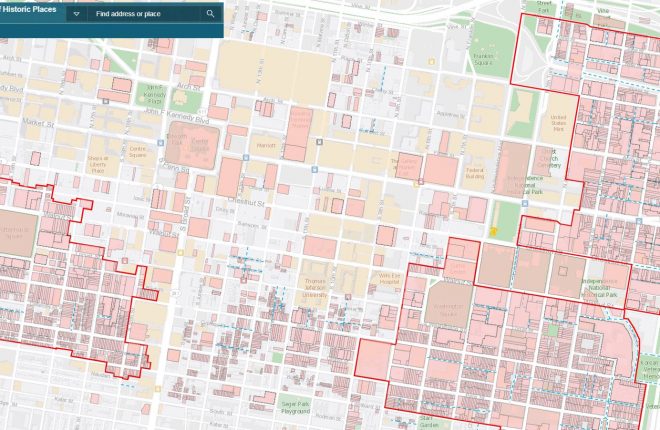The Philadelphia Historical Commission, under the Department of Planning and Development, has released properties and districts listed on the Philadelphia Register of Historic Places, along with a map of both.
“Philadelphia is rich in historic resources,” said Anne Fadullon, director of Planning and Development for the City. “Making data from the Philadelphia Register of Historic Places more accessible will benefit residents, developers and the historic preservation community.”
PlanPhilly, part of WHYY, nominated these datasets for release in the 2017 OpenDataVote contest organized by local geospatial software company Azavea. As part of the nomination, PlanPhilly said they wanted to compare the historic sites data with zoning information to understand the vulnerability of these resources due to zoning mismatches.
Other staff within City Government have plans for these resources as well.
“Having this data in an easy to access format and as a map is of great value not only to the public and preservation advocates, but also for internal city operations and we appreciate the efforts of Planning and Development to share this information publicly,” said Mark Wheeler, Chief Geographic Information Officer for the City of Philadelphia.
The Office of Innovation and Technology (OIT) can now integrate these geographic datasets into the City’s Address Information System (AIS), a tool OIT built to standardize City addresses and relate key information about a property back to city and public applications.
Now, any system in the city that performs a lookup of an address against AIS will have a “local historical register” value added to its results, alongside already available features that show the Council Districts, ward, or school catchment for the given address.
In particular, Wheeler looks forward to using the data to add another value to the City’s web-based property application that allows members of the public to look up information on any property in Philadelphia. Going forward, when any member of the public looks up a property, they will quickly know whether it is a historical site, though the public should always confirm with the Historical Commission at 215-686-7660. This flag for a historical site may help make decisions around urban planning and development more efficient.

